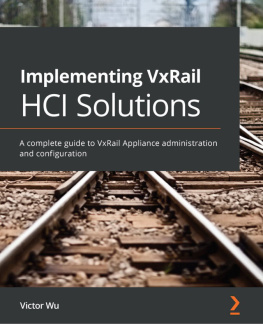Introduction
SAP announced the end-of-support of all non-SAP HANA platforms by 2025. Part of this strategy is the release of new SAP components such as S4/HANA which is only available on the SAP HANA platform. As a result, more and more customers are considering or are already migrating to SAP HANA.
The purpose of this book is to assist system architects, technical consultants and IT managers with designing system architectures for the deployment of SAP applications on the SAP HANA system. Important topics such as production and non-production systems, deployment options, backup and recovery, data replication, high-availability and virtualization are discussed in detail.
The content is based on SAP product features up to July 2016 and includes the SAP HANA multitenant database containers and recent support for virtualization of production systems.
Content
Choosing a new hardware infrastructure for your critical business applications is never an easy task. Room for further growth, performance, and high-availability are just a few aspects which need to be taken into consideration. It is even more complicated with SAP HANA as it has many prerequisites for the hardware infrastructure. SAP HANA is only supported on certified hardware and needs to be deployed in a certain way to guarantee performance.
We start our adventure in in which we talk about the SAP HANA technology, the editions, why it matters (the use cases) and the on-premise delivery options. We end the chapter with SAP HANA sizing, capacity planning guidelines and an introduction to data tiering.
The landscape layout discussion is continued in in which we go into more detail about the on-premise deployment options and, because SAP HANA needs data, the data provisioning scenarios.
It is all about scalability in . What happens if you reach the physical capacity of your server? Luckily, there are scale-up and scale-out possibilities. The high-availability and data partitioning capabilities of scale-out are discussed as well.
is on SAP HANA and disaster recovery. SAP HANA is an in-memory database. So what if the power fails? Fortunately, SAP HANA uses disk storage to provide a fallback in case of a system failure. Disk storage is usually not enough as it provides no point-in-time recovery possibilities. In this chapter, we discuss the SAP HANA database concepts and the different backup and recovery options of SAP HANA.
There are two disadvantages of the backup recovery procedure: first, the database can only be recovered up to the last log backup, and second, the application of log backups, especially when many exist, takes time because every entry in the log needs to be re-applied. A preferred solution, therefore, is to provide continuous replication of all persisted data. This can be done via storage replication or system replication. Storage replication uses integrated storage and is, therefore, only available in the SAP HANA TDI installation option. System replication is based on SAP HANA functionality in which changes are constantly replicated from the primary to the secondary system. In we discuss storage and system replication, their advantages and disadvantages and what to consider when.
SAP HANA appliances are built for high availability. This is achieved by redundancy: redundancy in the hardware, software, network and data center design. In most cases, this is not enough. In we look at high-availability software and how it can be used for single node and distributed SAP HANA systems.
is on virtualization and SAP HANA. Both software and hardware virtualization is discussed. For software virtualization, we dive deeper into virtualization with VMware and IBM POWER as they are the hypervisors most commonly used with SAP HANA.
Throughout this book we explain the technology options available to deploy SAP HANA, the principles for backup and recovery, data replication, high-availability and virtualization, the things to consider and the available technology to choose from to implement a well-considered scenario.
We end with Conclusion and Summary. In this chapter, we compare the different options and provide you with decision flowcharts which you can use in your organization to choose the proper technology for your environment and specific needs.
Acknowledgments
The first person I want to thank is Els Pollet who is the creator of every graph and schema to be found in this book. How many times did she have to start over because I forgot something or wanted something amended? My gratitude also goes to my colleagues at Logos Consulting. We are a small team, but we have more than a century of combined SAP technical experience between us. Our reference list of upgrades and migrations is breathtaking.














